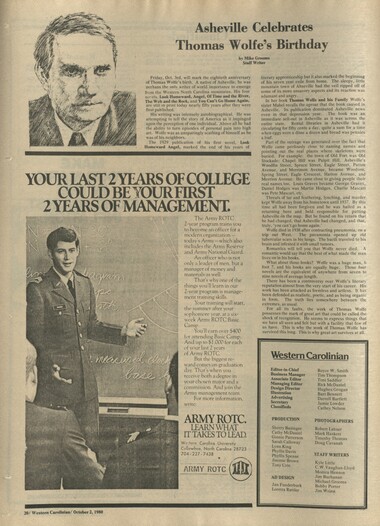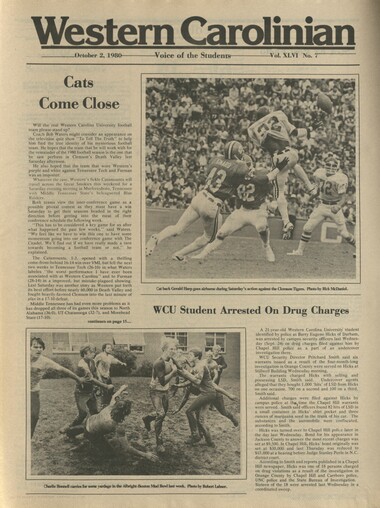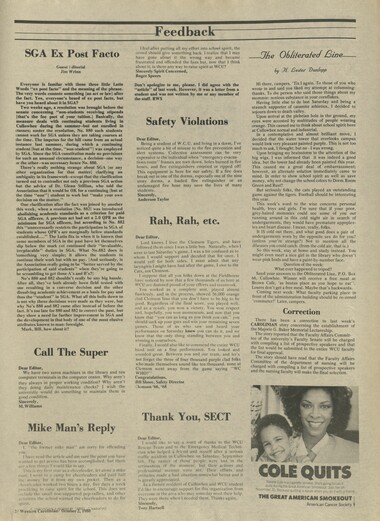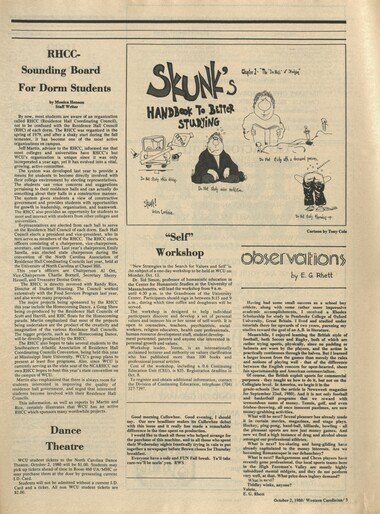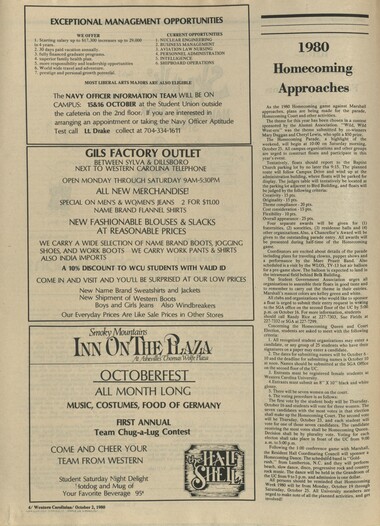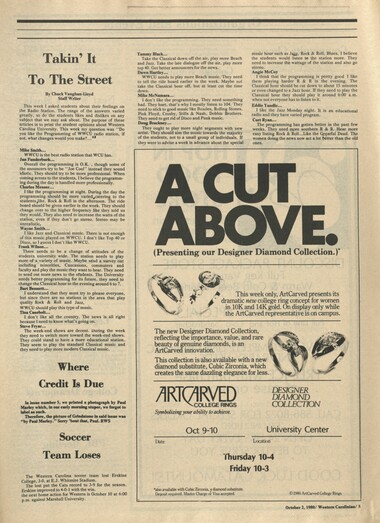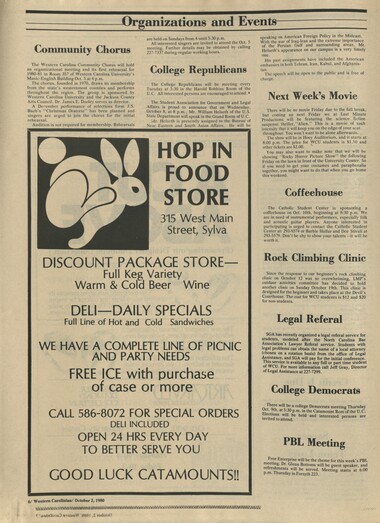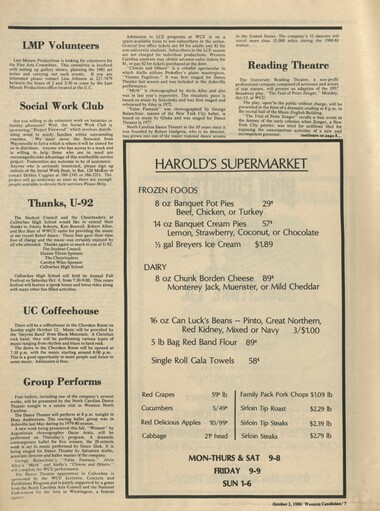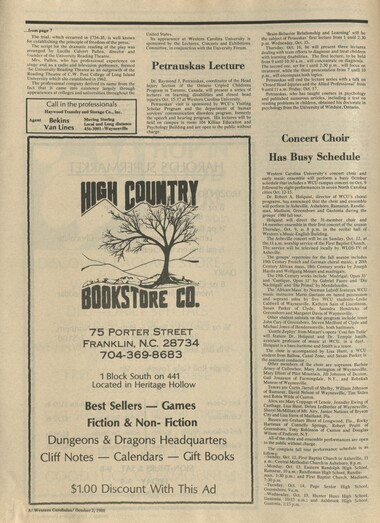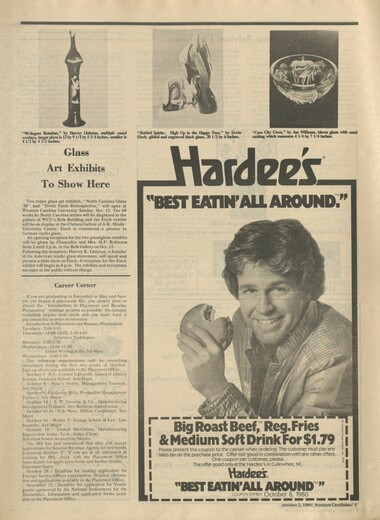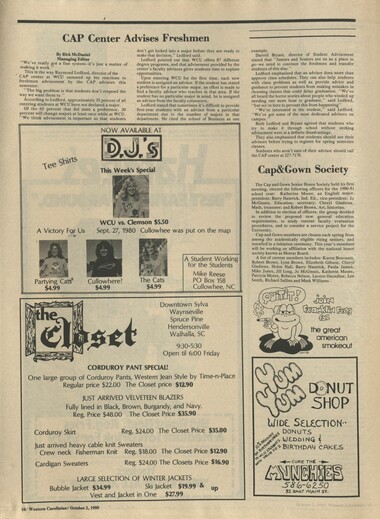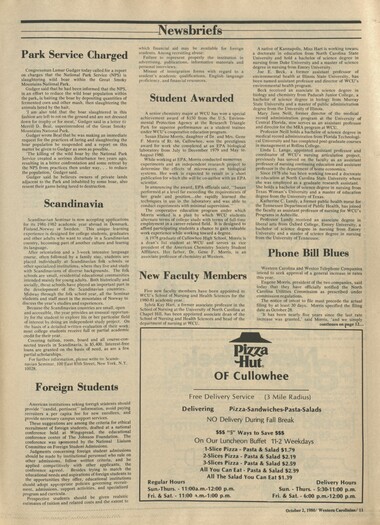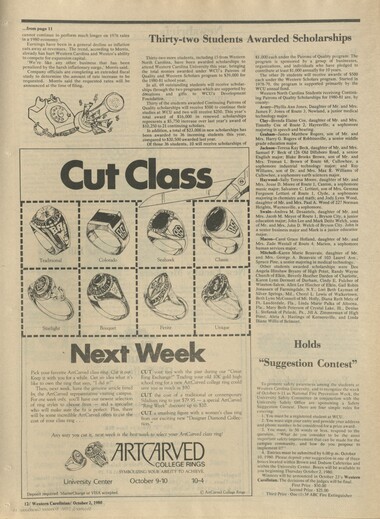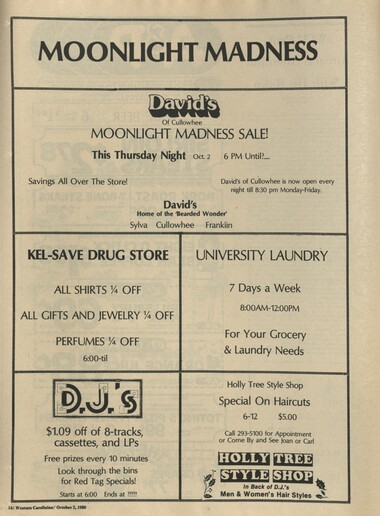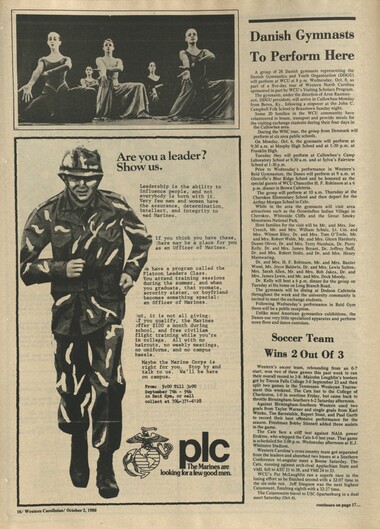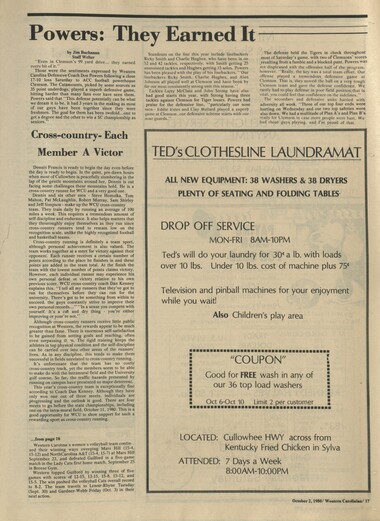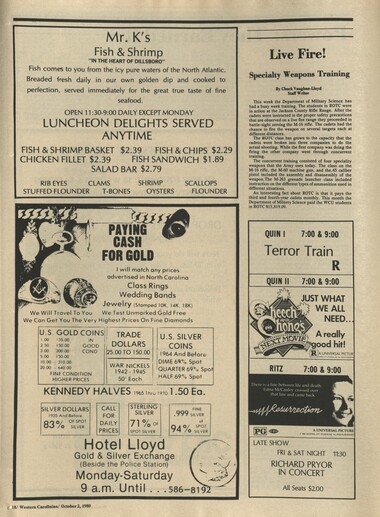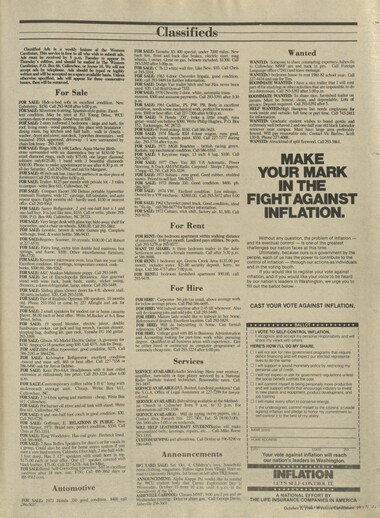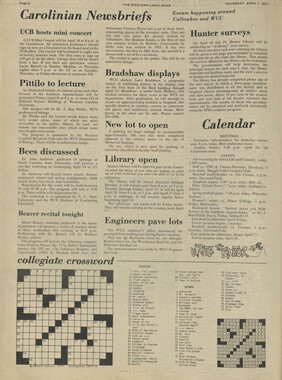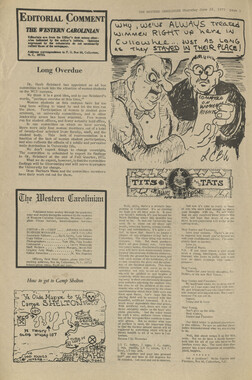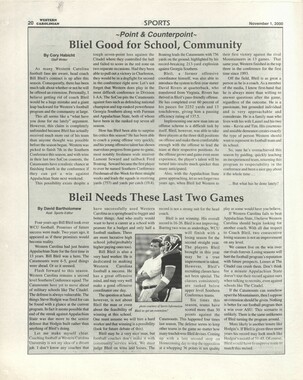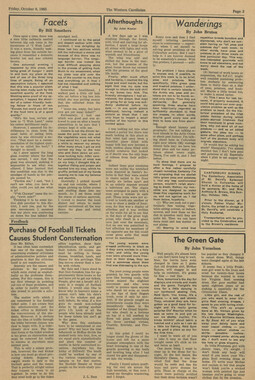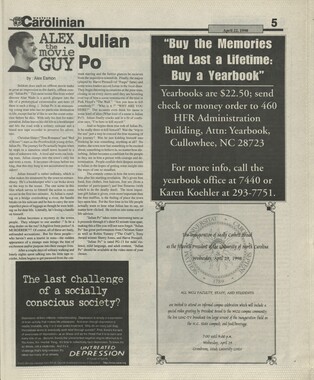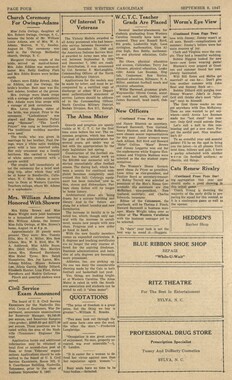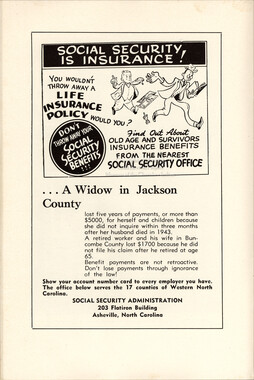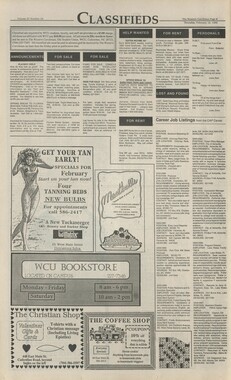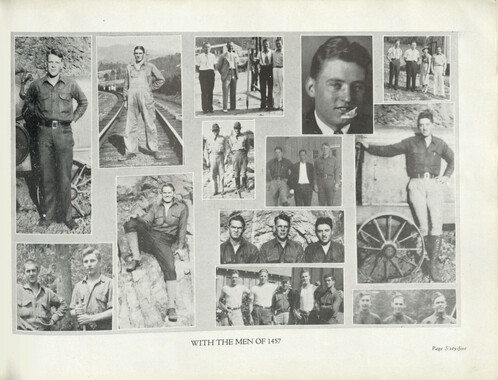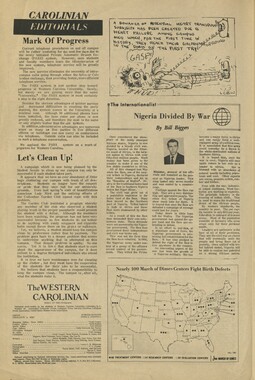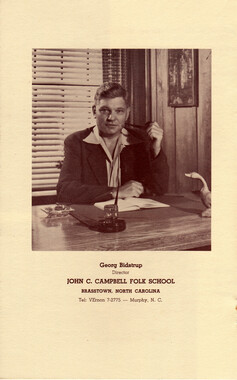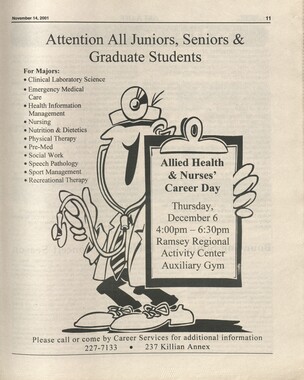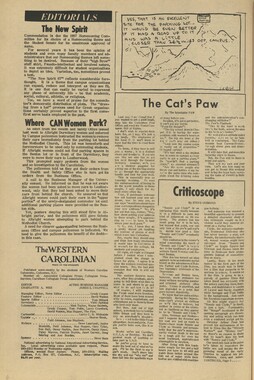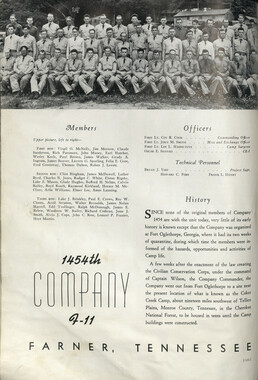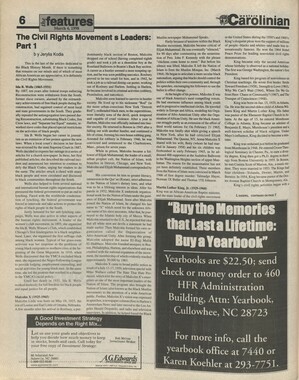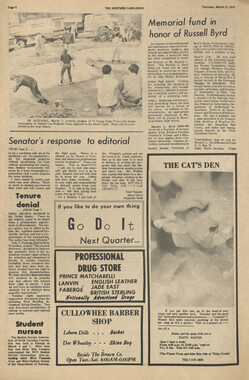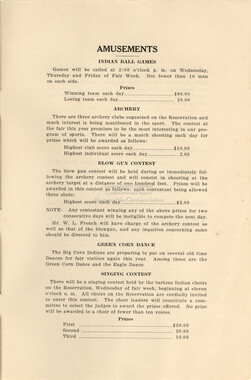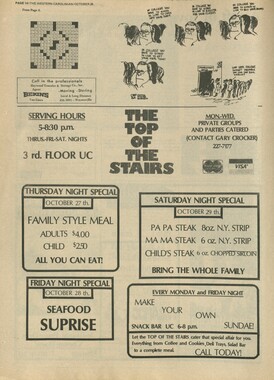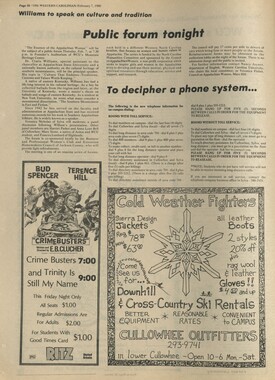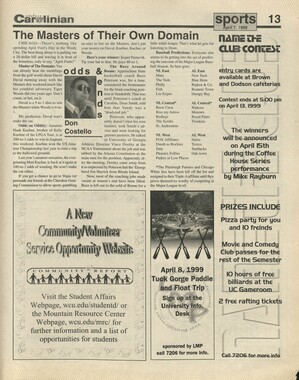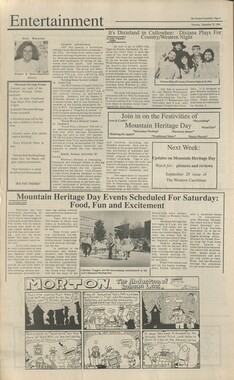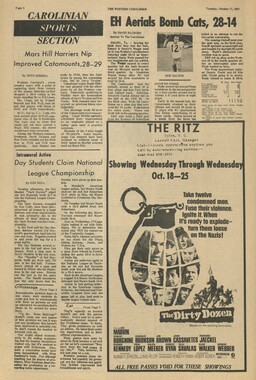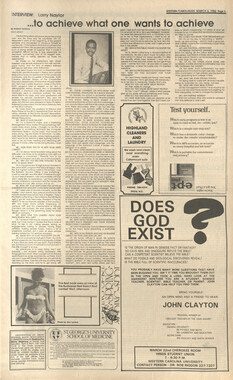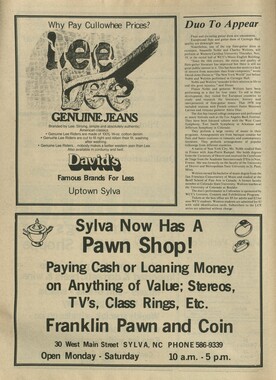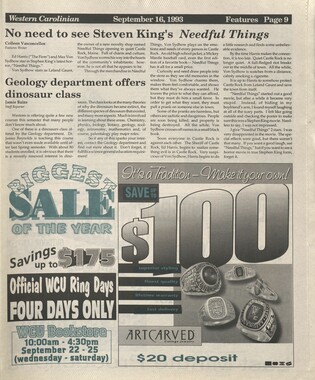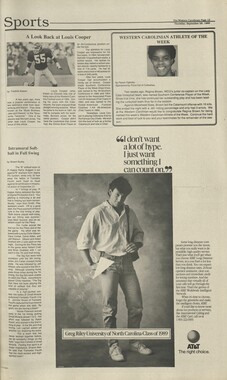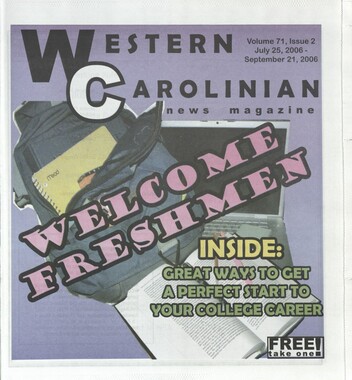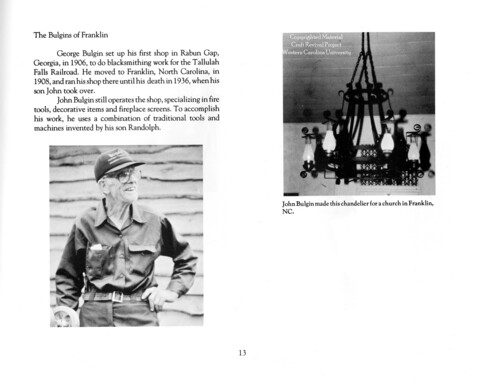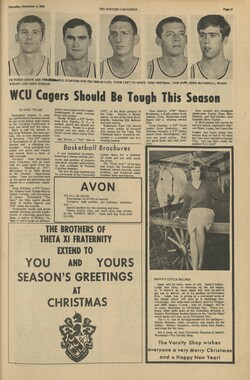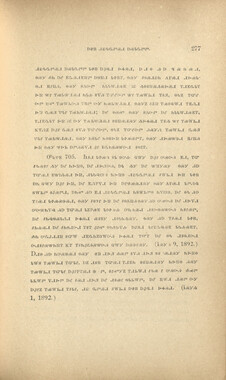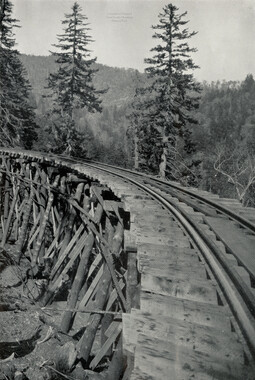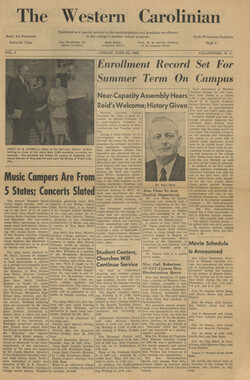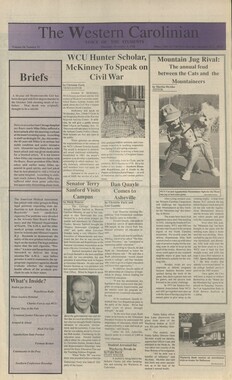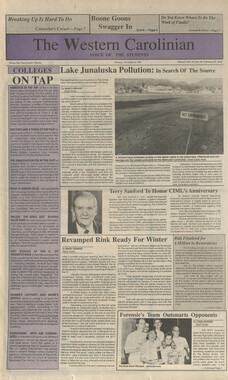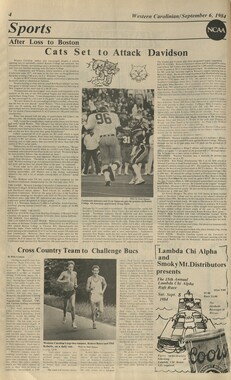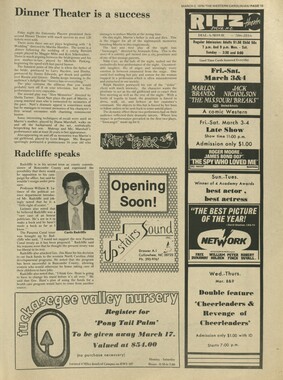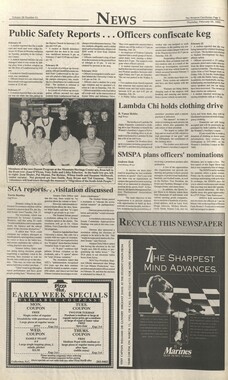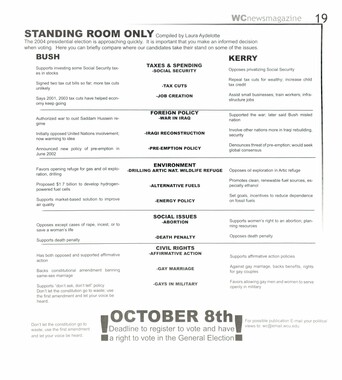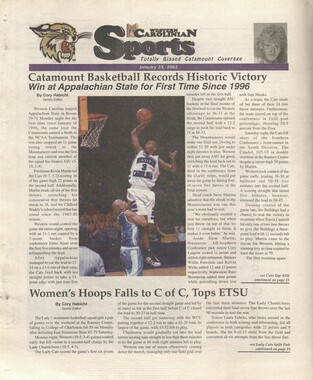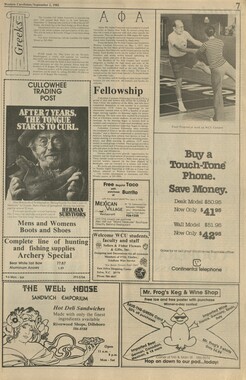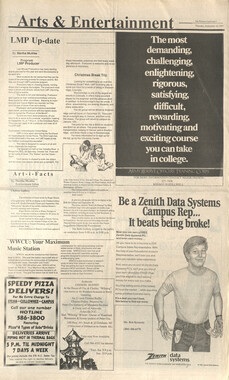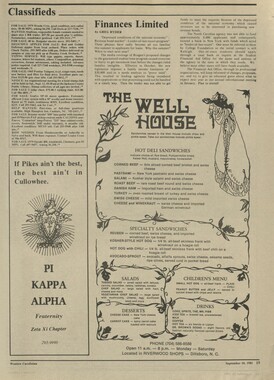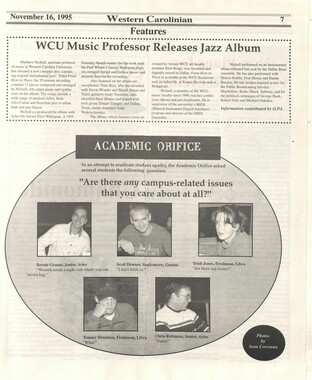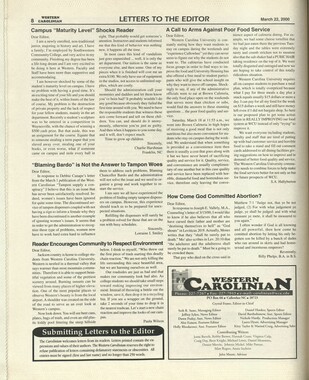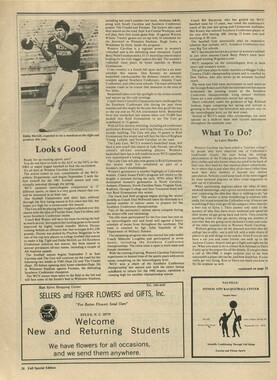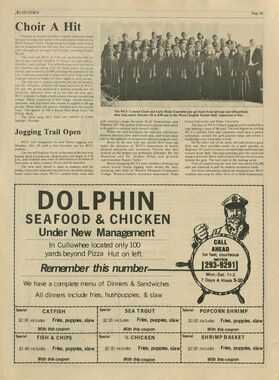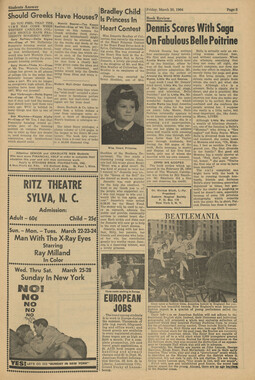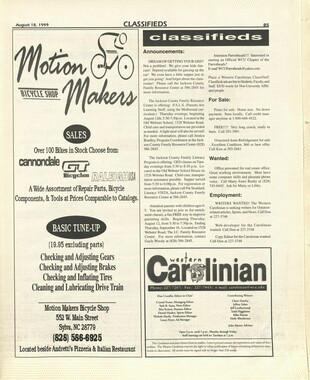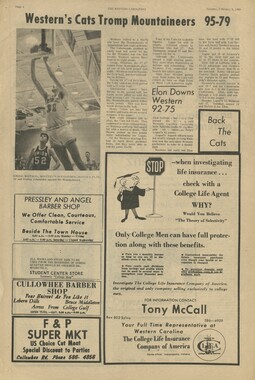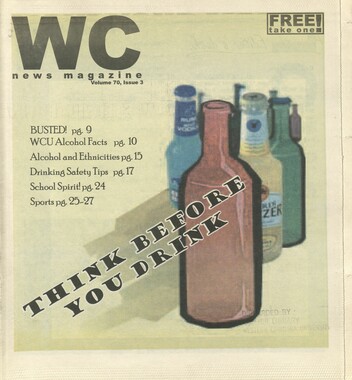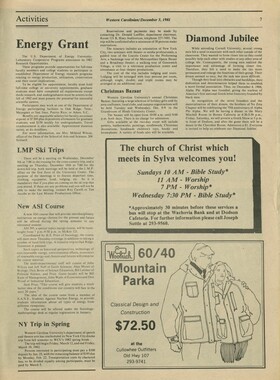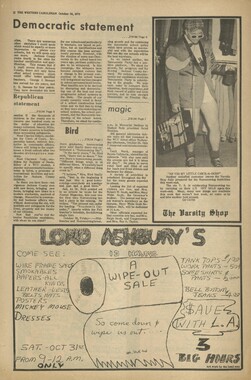Western Carolina University (20)
View all
- Canton Champion Fibre Company (2308)
- Cherokee Traditions (291)
- Civil War in Southern Appalachia (165)
- Craft Revival (1942)
- Great Smoky Mountains - A Park for America (2857)
- Highlights from Western Carolina University (430)
- Horace Kephart (941)
- Journeys Through Jackson (159)
- LGBTQIA+ Archive of Jackson County (85)
- Oral Histories of Western North Carolina (314)
- Picturing Appalachia (6772)
- Stories of Mountain Folk (413)
- Travel Western North Carolina (160)
- Western Carolina University Fine Art Museum Vitreograph Collection (129)
- Western Carolina University Herbarium (92)
- Western Carolina University: Making Memories (708)
- Western Carolina University Publications (2353)
- Western Carolina University Restricted Electronic Theses and Dissertations (146)
- Western North Carolina Regional Maps (71)
- World War II in Southern Appalachia (131)
University of North Carolina Asheville (6)
View all
- Allanstand Cottage Industries (62)
- Appalachian National Park Association (53)
- Bennett, Kelly, 1890-1974 (1388)
- Berry, Walter (76)
- Brasstown Carvers (40)
- Carver, George Washington, 1864?-1943 (26)
- Cathey, Joseph, 1803-1874 (1)
- Champion Fibre Company (233)
- Champion Paper and Fibre Company (297)
- Cherokee Indian Fair Association (16)
- Cherokee Language Program (22)
- Crowe, Amanda (40)
- Edmonston, Thomas Benton, 1842-1907 (7)
- Ensley, A. L. (Abraham Lincoln), 1865-1948 (275)
- Fromer, Irving Rhodes, 1913-1994 (70)
- George Butz (BFS 1907) (46)
- Goodrich, Frances Louisa (120)
- Grant, George Alexander, 1891-1964 (96)
- Heard, Marian Gladys (60)
- Kephart, Calvin, 1883-1969 (15)
- Kephart, Horace, 1862-1931 (313)
- Kephart, Laura, 1862-1954 (39)
- Laney, Gideon Thomas, 1889-1976 (439)
- Masa, George, 1881-1933 (61)
- McElhinney, William Julian, 1896-1953 (44)
- Niggli, Josephina, 1910-1983 (10)
- North Carolina Park Commission (105)
- Osborne, Kezia Stradley (9)
- Owens, Samuel Robert, 1918-1995 (11)
- Penland Weavers and Potters (36)
- Roberts, Vivienne (15)
- Roth, Albert, 1890-1974 (142)
- Schenck, Carl Alwin, 1868-1955 (1)
- Sherrill's Photography Studio (2565)
- Southern Highland Handicraft Guild (127)
- Southern Highlanders, Inc. (71)
- Stalcup, Jesse Bryson (46)
- Stearns, I. K. (213)
- Thompson, James Edward, 1880-1976 (226)
- United States. Indian Arts and Crafts Board (130)
- USFS (683)
- Vance, Zebulon Baird, 1830-1894 (1)
- Weaver, Zebulon, 1872-1948 (58)
- Western Carolina College (230)
- Western Carolina Teachers College (282)
- Western Carolina University (1840)
- Western Carolina University. Mountain Heritage Center (18)
- Whitman, Walt, 1819-1892 (10)
- Wilburn, Hiram Coleman, 1880-1967 (73)
- Williams, Isadora (3)
- Cain, Doreyl Ammons (0)
- Crittenden, Lorraine (0)
- Rhodes, Judy (0)
- Smith, Edward Clark (0)
- Appalachian Region, Southern (2569)
- Asheville (N.C.) (1923)
- Avery County (N.C.) (26)
- Blount County (Tenn.) (169)
- Buncombe County (N.C.) (1672)
- Cherokee County (N.C.) (283)
- Clay County (N.C.) (555)
- Graham County (N.C.) (233)
- Great Smoky Mountains National Park (N.C. and Tenn.) (519)
- Haywood County (N.C.) (3567)
- Henderson County (N.C.) (70)
- Jackson County (N.C.) (4745)
- Knox County (Tenn.) (31)
- Knoxville (Tenn.) (12)
- Lake Santeetlah (N.C.) (10)
- Macon County (N.C.) (420)
- Madison County (N.C.) (215)
- McDowell County (N.C.) (39)
- Mitchell County (N.C.) (132)
- Polk County (N.C.) (35)
- Qualla Boundary (981)
- Rutherford County (N.C.) (76)
- Swain County (N.C.) (2117)
- Transylvania County (N.C.) (270)
- Watauga County (N.C.) (12)
- Waynesville (N.C.) (84)
- Yancey County (N.C.) (72)
- Aerial Photographs (3)
- Aerial Views (60)
- Albums (books) (4)
- Articles (1)
- Artifacts (object Genre) (228)
- Bibliographies (1)
- Biography (general Genre) (2)
- Cards (information Artifacts) (38)
- Clippings (information Artifacts) (191)
- Copybooks (instructional Materials) (3)
- Crafts (art Genres) (622)
- Depictions (visual Works) (21)
- Design Drawings (1)
- Drawings (visual Works) (185)
- Envelopes (73)
- Exhibitions (events) (1)
- Facsimiles (reproductions) (1)
- Fiction (general Genre) (4)
- Financial Records (12)
- Fliers (printed Matter) (67)
- Glass Plate Negatives (381)
- Guidebooks (2)
- Internegatives (10)
- Interviews (815)
- Land Surveys (102)
- Letters (correspondence) (1013)
- Manuscripts (documents) (618)
- Maps (documents) (177)
- Memorandums (25)
- Minutes (administrative Records) (59)
- Negatives (photographs) (5926)
- Newsletters (1290)
- Newspapers (2)
- Notebooks (8)
- Occupation Currency (1)
- Paintings (visual Works) (1)
- Pen And Ink Drawings (1)
- Periodicals (193)
- Personal Narratives (10)
- Photographs (12976)
- Plans (maps) (1)
- Poetry (5)
- Portraits (4535)
- Postcards (329)
- Programs (documents) (151)
- Publications (documents) (2305)
- Questionnaires (65)
- Sayings (literary Genre) (1)
- Scrapbooks (282)
- Sheet Music (2)
- Slides (photographs) (402)
- Songs (musical Compositions) (2)
- Sound Recordings (796)
- Specimens (92)
- Speeches (documents) (15)
- Tintypes (photographs) (8)
- Transcripts (322)
- Video Recordings (physical Artifacts) (23)
- Vitreographs (129)
- Text Messages (0)
- A.L. Ensley Collection (275)
- Appalachian Industrial School Records (7)
- Appalachian National Park Association Records (336)
- Axley-Meroney Collection (2)
- Bayard Wootten Photograph Collection (20)
- Bethel Rural Community Organization Collection (7)
- Blumer Collection (5)
- C.W. Slagle Collection (20)
- Canton Area Historical Museum (2110)
- Carlos C. Campbell Collection (373)
- Cataloochee History Project (64)
- Cherokee Studies Collection (4)
- Daisy Dame Photograph Album (5)
- Daniel Boone VI Collection (1)
- Doris Ulmann Photograph Collection (112)
- Elizabeth H. Lasley Collection (1)
- Elizabeth Woolworth Szold Fleharty Collection (4)
- Frank Fry Collection (95)
- George Masa Collection (173)
- Gideon Laney Collection (452)
- Hazel Scarborough Collection (2)
- Hiram C. Wilburn Papers (28)
- Historic Photographs Collection (236)
- Horace Kephart Collection (861)
- Humbard Collection (33)
- Hunter and Weaver Families Collection (1)
- I. D. Blumenthal Collection (4)
- Isadora Williams Collection (4)
- Jesse Bryson Stalcup Collection (47)
- Jim Thompson Collection (224)
- John B. Battle Collection (7)
- John C. Campbell Folk School Records (80)
- John Parris Collection (6)
- Judaculla Rock project (2)
- Kelly Bennett Collection (1407)
- Love Family Papers (11)
- Major Wiley Parris Civil War Letters (3)
- Map Collection (12)
- McFee-Misemer Civil War Letters (34)
- Mountain Heritage Center Collection (4)
- Norburn - Robertson - Thomson Families Collection (44)
- Pauline Hood Collection (7)
- Pre-Guild Collection (2)
- Qualla Arts and Crafts Mutual Collection (12)
- R.A. Romanes Collection (681)
- Rosser H. Taylor Collection (1)
- Samuel Robert Owens Collection (94)
- Sara Madison Collection (144)
- Sherrill Studio Photo Collection (2558)
- Smoky Mountains Hiking Club Collection (616)
- Stories of Mountain Folk - Radio Programs (374)
- The Reporter, Western Carolina University (510)
- Venoy and Elizabeth Reed Collection (16)
- WCU Gender and Sexuality Oral History Project (32)
- WCU Mountain Heritage Center Oral Histories (25)
- WCU Oral History Collection - Mountain People, Mountain Lives (71)
- WCU Students Newspapers Collection (1784)
- Western North Carolina Tomorrow Black Oral History Project (69)
- William Williams Stringfield Collection (2)
- Zebulon Weaver Collection (109)
- African Americans (390)
- Appalachian Trail (35)
- Artisans (521)
- Cherokee art (84)
- Cherokee artists -- North Carolina (10)
- Cherokee language (21)
- Cherokee pottery (101)
- Cherokee women (208)
- Church buildings (170)
- Civilian Conservation Corps (U.S.) (110)
- College student newspapers and periodicals (1876)
- Dams (107)
- Dance (1023)
- Education (222)
- Floods (61)
- Folk music (1015)
- Forced removal, 1813-1903 (2)
- Forest conservation (220)
- Forests and forestry (1184)
- Gender nonconformity (4)
- Great Smoky Mountains National Park (N.C. and Tenn.) (181)
- Hunting (45)
- Landscape photography (25)
- Logging (118)
- Maps (83)
- Mines and mineral resources (8)
- North Carolina -- Maps (18)
- Paper industry (38)
- Postcards (255)
- Pottery (135)
- Railroad trains (71)
- Rural electrification -- North Carolina, Western (3)
- School integration -- Southern States (2)
- Segregation -- North Carolina, Western (5)
- Slavery (5)
- Sports (452)
- Storytelling (243)
- Waterfalls -- Great Smoky Mountains (N.C. and Tenn.) (66)
- Weaving -- Appalachian Region, Southern (280)
- Wood-carving -- Appalachian Region, Southern (328)
- World War, 1939-1945 (173)
Western Carolinian Volume 46 Number 07, October 2, 1980
Item
Item’s are ‘child’ level descriptions to ‘parent’ objects, (e.g. one page of a whole book).
-
-
Asheville Celebrates Thomas Wolfe's Birthday bv Mike Grooms Staff Writer Friday, Oct. 3rd, will mark the eightieth anniversary of Thomas Wolfe's birth. A native of Asheville. he was oerharjs the onlv writer of world importance to emerge from the Western North Carolina mountains. His four no els, Look Homeward, Angel, Of Time and the River, The Web and the Rock, and You Can't Go Home Again, are still in print today nearly fiftv years after they were first published. His writing was intensely autobiographical. He was attempting to tell the story of America as it impinged upon the perception of one individual. Above all he had the ability to turn episodes of personal pain into high art. Wolfe was as unsparingly scathing of himself as he was of his neighbors. The 1929 publication of his first novel, Look Homeward Angel, marked the end of his years of YOUR LAST 2 YEARS OF COLLEGE COULD BE YOURFIRST 2 YEARS OF MANAGEMENT The Army ROTC 2-year program trains vou to become an officer for a modem organization— today s Army- which also includes the Army Reserve and Army National Guard. An officer who is not onjy a leader of men, but a manager of money and materials as well. That's why one of the things vou II learn in our 2-year program is management training skills. Your training will start, the summer after vour sophomore year, at a six- week Army ROTC Basic Gamp. You'll earn over $400 tor attending Basic Camp. And up to $1,000 for each of your last 2 years of Army ROTC But the biggest reward comes on graduation dav That's when vou receive hoth a degree in your chosen major and a commission. And join the Army management team. lor more information, write: ARMY ROTC. LEARN WHAT IT TAKES TO LEAD. Wctorn Carolina University Cullowhee, North Carolina 28723 704-227-7438 • v--—s ARMY ROTC (j£|| literary apprenticeship but it also marked the beginning of his seven year exile from home. The sleepy, little mountain town of Ahseville had the veil ripped off of some of its more unsavory aspects and its reaction was adamant and angry. In her book Thomas Wolfe and his Family Wolfe's sister Mabel recalls the uproar that the book caused in Asheville. Its publication dominated Asheville news even in that depression year. The book was an immediate sell-out in Asheville as it was across the entire slate. Rental libraries in Asheville had it circulating for fifty cents a day, quite a sum for a time when eggs were a dime a dozen and bread was pennies a loaf. Part of the outrage was generated over the fact that Wolfe came perilously close to naming names and pointing out the real places where skeletons were buried, for example: the town of Old Fort was Old Stockade; Chapel Hill was Pulpit Hill, Asheville's Woodfin Street, Spruce Street, Eagle Street, Patton Avenue, and Mcrrimon Avenue, became Woodson, Spring Street, Eagle Crescent, Hatton Avenue, and Merrion Avenue. He came close to giving people their real names too. Louis Graves became George Graves, Daniel Hodges was Martin Hodges, Charlie Mascari was Pete Mascari, etc. Threats of tar and feathering, lynching, and murder kept Wolfe away from his hometown until 1937. By this time all had been forgiven and he was hailed as a returning hero and held responsible for putting Asheville on the map. But he found on his return that he had changed, that Asheville had changed, and that, truly, 'you can't go home again.' Wolfe died in 1938 after contracting pneumonia, on a trip out West. The pneumonia opened up old tubercular scars in his lungs. The bacili traveled to his brain and infested it with small tumors. Romantics will tell you that Wolfe never died. A romantic would say that the best of what made the man lives on in his books. What about those books? Wolfe was a huge man, 6 foot 7, and his books are equally huge. Those four novels are the equivalent of anywhere from seven to nine novels of average length. There has been a controversy over Wolfe's literary reputation almost from the very start of his career. His work has been attacked as formless and artless. It has been defended as realistic, poetic, and as being organic in form. The truth lies somewhere between the extremes, as usual. For all its faults, the work of Thomas Wolfe possesses the mark of great art that could be called the shock of recognition. He seems to express things that we have all seen and felt but with a facility that few of us have. This is why the work of Thomas Wolfe has survived this long. This is why great art survives at all. Western Carolinian Editor-in-Chief Business Manager Associate Editor Managing Editor Design Director Illustration Advertising Secretary Classifieds PRODUCTION Sherry Basinger Cathy McDaniel Ginnie Patterson Sarah Calloway Lynn King Phyllis Davis Phyllis Spense Jimmie Brown Tony Cole AD DESIGN Jan Funderburk Loretta Rattler Royce W. Smith Tim Thompson Toni Saddler Rick McDaniel Hughes Grogan Bart Bennett Darrell Bartlett Jamie Lowder Cathey Nelson PHOTOGRAPHERS Robert Lahser Mark Haskett Timothy Thomas Doug Cavanah STAFF WRITERS Kyle Little C.W.Vaughan-Lloyd Monica Henson Jim Buchanan Michael Grooms Bobby Porter Jim Wrinn 20/ Western Carolinian/ October 2, 1980
Object
Object’s are ‘parent’ level descriptions to ‘children’ items, (e.g. a book with pages).
-
The Western Carolinian is Western Carolina University's student-run newspaper. The paper was published as the Cullowhee Yodel from 1924 to 1931 before changing its name to The Western Carolinian in 1933.
-
